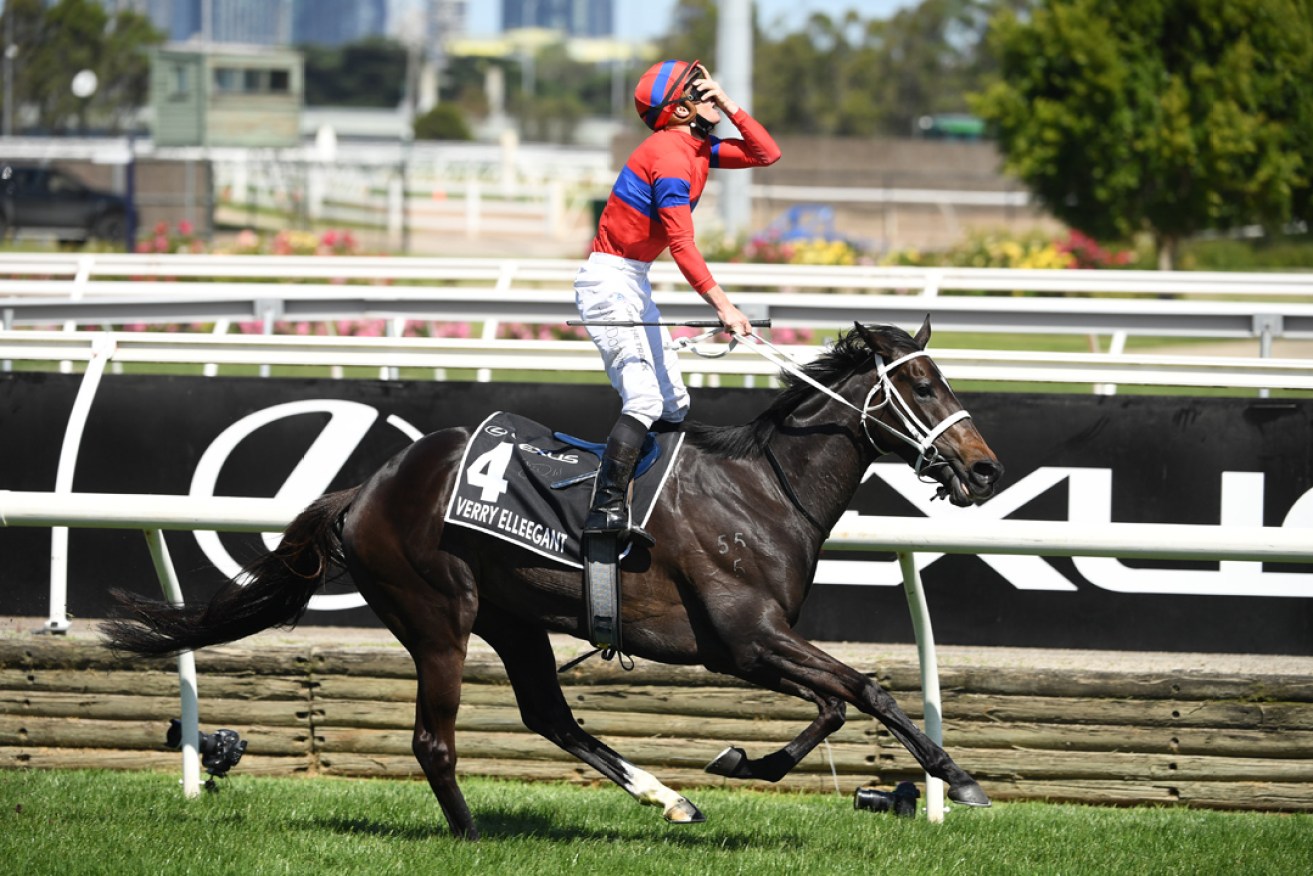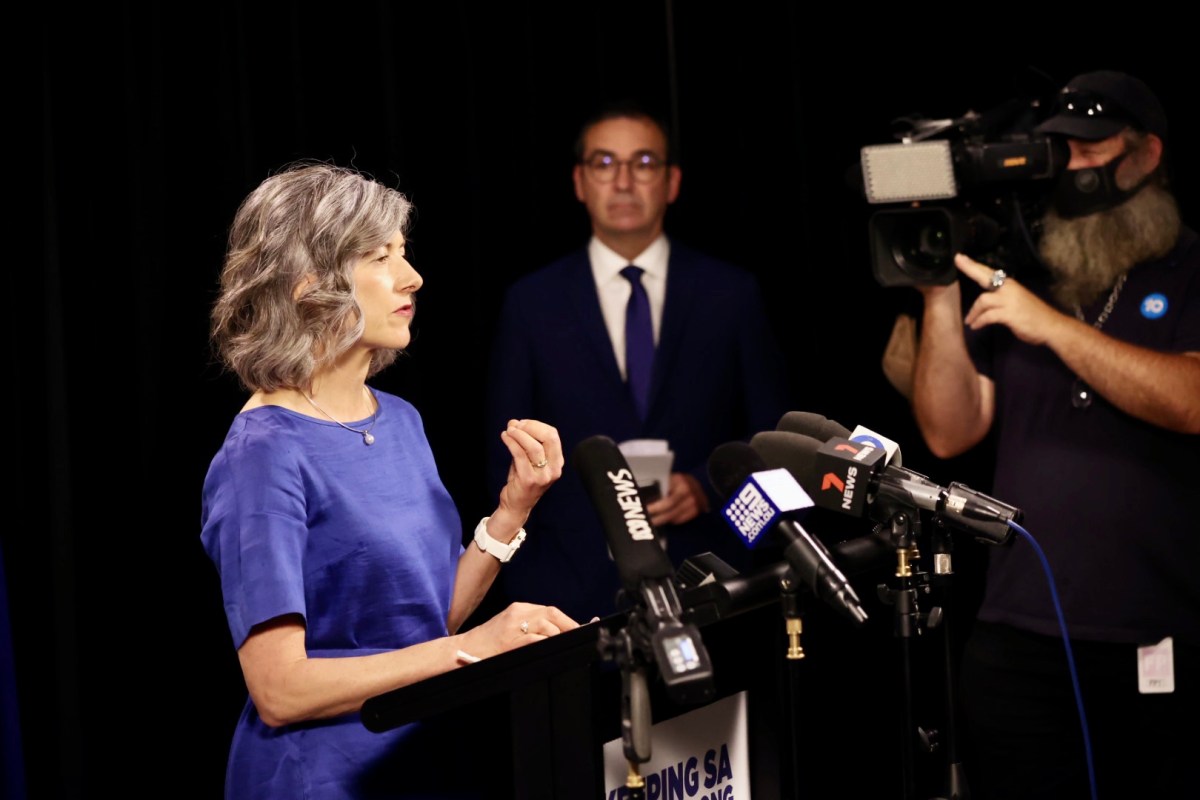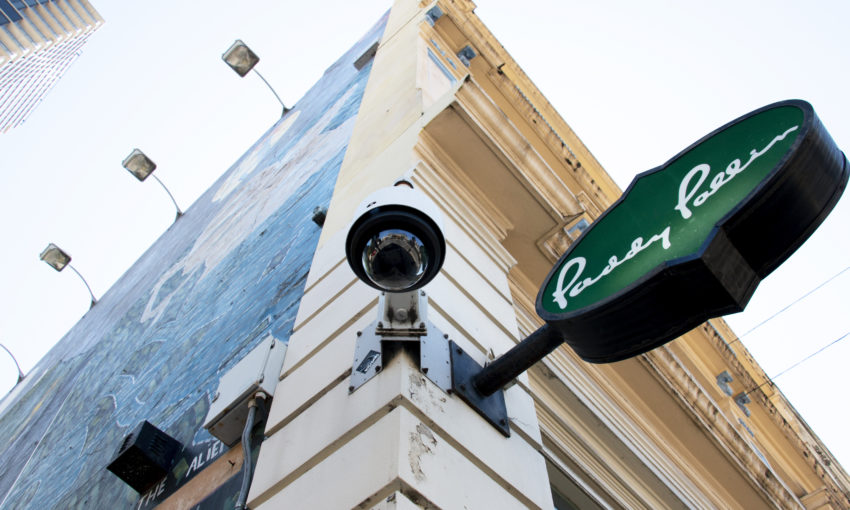What we know today, Tuesday November 2
Victoria has recorded 989 new COVID-19 cases and another nine deaths overnight, with 667 people in hospital including 127 in intensive care and 76 on a ventilator.

Jockey James McDonald appears to be in disbelief after winning the 2021 Melbourne Cup aboard Verry Elleegant. Picture: James Ross/AAP.
- Mare Verry Elleegant wins Melbourne Cup
- Vic records 989 new cases, nine deaths
- NSW records 173 cases, four deaths
- Global pledge to end deforestation by 2030
- SA considers mandatory vax for teachers
- SA COVID case surge modelling update after borders open
- Bet on scientists not politicians, PM tells climate change forum
- Facial recognition cameras to roll out across city
- Post-lockdown Melbourne Cup to run with spectators
Mare Verry Elleegant wins Melbourne Cup
Verry Elleegant has swept to victory in the Melbourne Cup with Incentivise finishing second and Spanish Mission in third place in the famous race.
Ridden by James McDonald and trained by Chris Waller, the Kiwis combined as the mare defeated the two favourites to claim the cup in emphatic style over the Flemington two miles.
Famous for engineering the record-breaking exploits of Winx, Waller claimed his first Melbourne Cup win as Verry Elleegant beat the favourite Incentivise in Australia’s greatest race.
UK-trained stayer Spanish Mission took the minor placing.
Incentivise, one of the shortest-priced favourites in Cup history, looked the winner at the top of the straight but he was no match for Verry Elleegant’s late surge under jockey James McDonald.
Waller now has in his possession one of Australian sport’s most prized trophies to go alongside Winx’s four Cox Plates.
He has rewritten all the record books on his way to the top but a Melbourne Cup triumph ranks as the sweetest moment since confirming his arrival among the best in the business.
Waller has won the past 11 Sydney trainers’ premierships, trained a horse of a lifetime in Winx and is setting standards that only he is likely to match.
The Melbourne Cup was run in front of 10,000 fully-vaccinated racegoers after Victoria’s coronavirus restrictions were lifted in time for reduced crowds during the spring carnival.
Vic records 989 new cases, nine deaths
Victoria has recorded 989 new COVID-19 cases and another nine deaths overnight, with 19,409 active cases and 667 people in hospital including 127 in intensive care including 76 on a ventilator.
Another 48,002 tests were processed on Monday and 16,158 vaccines administered at state-run hubs.
It comes as Melbourne and Victoria’s regions reunited after restrictions eased at 6pm on Friday, ahead of the state hitting its 80 per cent full vaccination target at the weekend.
The border between Melbourne and the regions has come down, masks no longer need to be worn outdoors, and capacity limits increased for restaurants, pubs and cafes, and indoor entertainment venues, gyms and retail reopened to fully-vaccinated patrons.
NSW records 173 cases, four deaths
NSW Premier Dominic Perrottet is poised to announce new freedoms for residents after the state reported 173 new local cases of COVID-19 and four deaths.
The new cases were recorded in the 24-hours until 8pm on Monday from 58,988 tests and rose by 38 cases from the previous day.
There are 333 COVID-19 patients in NSW hospitals and 72 are in ICU.
Some 93.6 per cent of people aged 16 years and older have had one dose of a vaccine and 87.8 per cent are fully jabbed.
Perrottet is expected to announce a further relaxation of COVID-19 restrictions after the state began transitioning out of a near four-month lockdown three weeks ago.
The changes so far only applied to people who are fully vaccinated. Restrictions for unvaccinated people aren’t due to end until next month.
The premier has flagged the state could aspire to a fully vaccinated coverage rate of 95 per cent of eligible people
Global pledge to end deforestation by 2030
More than 100 global leaders have pledged to halt and reverse deforestation and land degradation by the end of the decade, underpinned by $US19 billion ($A25 billion) in public and private funds to invest in protecting and restoring forests.
The joint statement at the COP26 climate talks in Glasgow was backed by the leaders of countries including Brazil, Indonesia and the Democratic Republic of Congo, which collectively account for 85 per cent of the world’s forests.
The Glasgow Leaders’ Declaration on Forest and Land Use will cover forests totalling almost 34 million square kilometres, according to a statement from the UK prime minister’s office on behalf of the leaders.
“We will have a chance to end humanity’s long history as nature’s conqueror, and instead become its custodian,” said British leader Boris Johnson, calling it an unprecedented agreement.
A slew of additional government and private initiatives were launched on Tuesday to help reach that goal, including billions in pledges for indigenous guardians of the forest and sustainable agriculture.
Forests absorb roughly 30 per cent of carbon dioxide emissions, according to the non-profit World Resources Institute. The forests take the emissions out of the atmosphere and prevent them warming the climate.
Yet this natural climate buffer is rapidly disappearing. The world lost 258,000 square kilometres of forest in 2020, according to WRI’s deforestation tracking initiative Global Forest Watch – an area larger than the United Kingdom.
Monday’s agreement vastly expands a similar commitment made by 40 countries as part of the 2014 New York Declaration of Forests and goes further than ever before in laying out the resources to reach that goal.
Under the agreement, 12 countries including Britain have pledged to provide $US12 billion of public funding between 2021 and 2025 to help developing countries, including in efforts to restore degraded land and tackle wildfires.
At least a further $US7 billion would be provided by more than 30 private sector investors.
Five countries, including the Britain and United States, and a group of global charities on Tuesday also pledged to provide $US1.7 billion in financing to support Indigenous people’s conservation of forests and to strengthen their land rights.
SA considers mandatory vax for teachers
South Australian health authorities are considering introducing mandatory COVID vaccinations for teachers and school staff.
Chief Public health officer Professor Nicola Spurrier yesterday told reporters “it’s definitely something we are looking at”.
“We have to think through all of the pros and cons in going down that path and we’re in the process of doing just that and also looking at what other states have done in that regard,” she said.
Premier Steven Marshall said SA authorities had been “loath to introduce anything mandatory outside of the national cabinet framework” but “we’ll look at it carefully”.
“We are looking at all of those matters at the moment,” he said yesterday.
“I don’t have anything to report today but very happy to look at that more closely into the future.

SA chief public health officer Professor Nicola Spurrier and Premier Steven Marshall at a press conference. Photo: Tony Lewis/InDaily
“Some states have made it mandatory – I think Victoria has made it completely mandatory – but they do find themselves in a very different situation much earlier than we have so we’ll look at it carefully.”
The State Government yesterday announced COVID vaccination hubs would open at another 54 schools in lagging areas across Adelaide and the regions, as data shows South Australia still has the second-lowest rate in the country for 12-15 year olds.
The hubs are on top of 24 already operating at SA schools, with health authorities hoping to vaccinate 34,000 students by the end of the school term.
The sites have been chosen in areas to give priority access to vulnerable communities and those with lower vaccination rates.
The Education Department is also conducting a ventilation audit to see if any modifications are needed in schools to help reduce the spread of the virus, once borders open on November 23 and the virus enters SA.
The audit is expected to be completed in early December.
-Jemma Chapman
SA COVID case surge modelling update after borders open
Modelling showing the expected surge in COVID cases in South Australia will continue to be updated to determine which restrictions will be lifted once the state hits its 90 per cent vaccination target, Premier Steven Marshall says.
Marshall told reporters yesterday that the Government asked researchers at the University of Adelaide to continuously redo the modelling showing SA’s projected case load and hospitalisation rates as more information comes in from interstate jurisdictions.
He said the updated modelling would help determine “the level of restrictions that are most appropriate” once 90 per cent of South Australians aged over 12 are fully-vaccinated.
It comes after the State Government yesterday released commissioned modelling from the University of Adelaide showing SA will have a more than one-in-four chance of a COVID outbreak once the state opens its borders on November 23 – the expected date for when 80 per cent of South Australians aged over 16 will be doubled-dosed.
South Australia’s “COVID-Ready” plan states once the state hits the 90 per cent vaccination target, restrictions on “most activities” will be lifted, but it doesn’t specify which activities will be included.
Marshall said as South Australia nears the 90 per cent target, researchers will be able to collect more information from interstate jurisdictions, vaccination rates and the “likely outcomes of different settings for public health social measures”.
“Those models will be allowed to be updated during that period of time and as we get closer to that 90 per cent we can talk about the level of restrictions that are most appropriate,” he said.
Chief public health officer Professor Nicola Spurrier said the government planned to “continue to redo the modelling” once the coronavirus delta variant made its way across the border.
She said the next modelling update wouldn’t be received until after November 23.
“We will start to have cases and what we do is put those cases and their onward transmission into future models so that when we get to 90 per cent – and I of course will be putting 12 years and up into that group – we will be seeing what further restrictions we can lift at that stage,” she said.
“We’ve been really pressuring our modellers to do a lot of stuff for us, so of course we need to be able to fit it into their schedule.”
Bet on scientists not politicians, PM tells climate change forum
It will be scientists, not politicians, who come up with the solution to climate change, Prime Minister Scott Morrison has told assembled world leaders at the COP26 climate summit in Glasgow.
They will be the people to come up with the real solutions to climate change, much like they did with the global pandemic, he said.
“The challenge of combating climate change will be met the same way, and it will be met by people who frankly are largely not in this room,” Morrison told the summit.
“It will be our scientists, our technologists, our engineers, our entrepreneurs, our industrialists and our financiers that will actually chart the path to net zero and it is up to us as leaders of governments to back them in.”
Global momentum to tackle climate change is building and Australia’s best and brightest are at the ready, he said.
“The Australian way is to bet on them and we think that’s a good bet,” he said.
Driving the emergence of low emission technologies and encouraging their adoption was at the heart of Australia’s plan to reach net zero by 2050, Mr Morrison said.
But he said it was important to do so in such a way not to deny people their livelihoods or the opportunity for a better quality of life – especially those in developing nations.
“Cleaner technology solutions must out-compete existing technologies if they are to be successful everywhere,” he said.
“Raising the cost of energy just impacts on those who can afford it least.”
Earlier on Monday, Morrison announced an additional $500 million in climate financial aid to our Pacific and South East Asian neighbours, bringing our total commitment to $2 billion over the next five years.
Australia has joined with the likes of the UK, US and Canada in doubling what it committed in the 2015 to 2020 period.
“Australia meets and beats our commitments,” he told the summit.
Australia has already reduced emissions by more than 20 per cent since 2005 and we are on target to fall by 35 per cent by 2030, far exceeding our 2015 Paris climate agreement, he said.
Facial recognition cameras to roll out across city
CCTV cameras using facial, object and number plate recognition will be rolled out in the city over the next 18 months in a partnership between SA Police and Adelaide City Council.

Photo: Angela Skujins
The $3m, federally-funded City Safe CCTV Network is being implemented as part of the 10-year Adelaide City Deal between the council and state and federal governments.
The CTTV tender specification requests the most “up-to-date smart technology” – such as the facial and number plate recognition – but also 360-view and low-light performance.
Lord Mayor Sandy Verschoor said it would be up to SA Police to decide which aspects of the available technology it used, and that it was intended to make Adelaide a liveable, safe city.
“SAPOL will continue to maintain the privacy and confidentiality of city users as a requirement of their prosecution chain,” she said.
“Locations and coverage by the City Safe CCTV Network will be determined in conjunction with SAPOL.”
University of South Australia senior law lecturer Sarah Moulds said it was a new development for the city and council, but part of a growing trend.
Moulds, a co-founder of the Rights Resource Network SA – a collective of legal professionals, academics and volunteers committed to improving South Australian rights protection – says facial recognition technology could be effective but there were risks.
“The Australian Human Rights Commission and some researchers from the UK have published studies that suggest it’s not always accurate. Particularly for people with non-Caucasian features, it’s not always accurate,” she said.
“Another issue for me is around consent… of covert use of facial recognition.
“That’s particularly a problem when we don’t have any laws that safeguard proportionality and other rights, [such as] privacy rights.”
Read the full story here
-Angela Skujins
Post-lockdown Melbourne Cup to run with spectators
After running the race with empty stands in 2020, the Victorian Racing Commission will welcome punters back for today’s Melbourne Cup.
The crowd at Flemington Racecourse will be smaller than usual, at a COVID-19-safe limit of 10,000 people, but the industry said people were excited at being able to return to the track following the latest lockdown.
Those unable to get tickets to the race will be able to watch at home, with up to 10 visitors.
It comes as Melbourne and Victoria’s regions reunited after coronavirus restrictions eased at 6pm on Friday, ahead of the state hitting its 80 per cent full vaccination target at the weekend.
The border between Melbourne and the regions has now come down, masks no longer need to be worn outdoors, and capacity limits increased for restaurants, pubs and cafes, and indoor entertainment venues, gyms and retail reopened to fully vaccinated patrons.
Families were reunited and tears shed at Melbourne Airport as Victoria reopened to quarantine-free travel on Monday for arrivals fully vaccinated against COVID-19.
Fully vaccinated international arrivals touching down in Victoria no longer have to spend 14 days in quarantine, as long as they provide a negative COVID-19 test within 72 hours of departure and another 24 hours after arrival.
There were 1471 new locally acquired COVID-19 cases and four deaths announced on Monday.
-With AAP and Reuters




